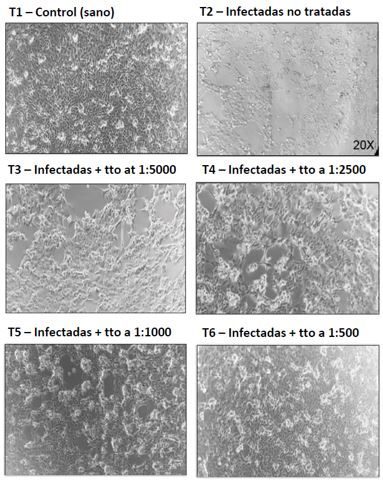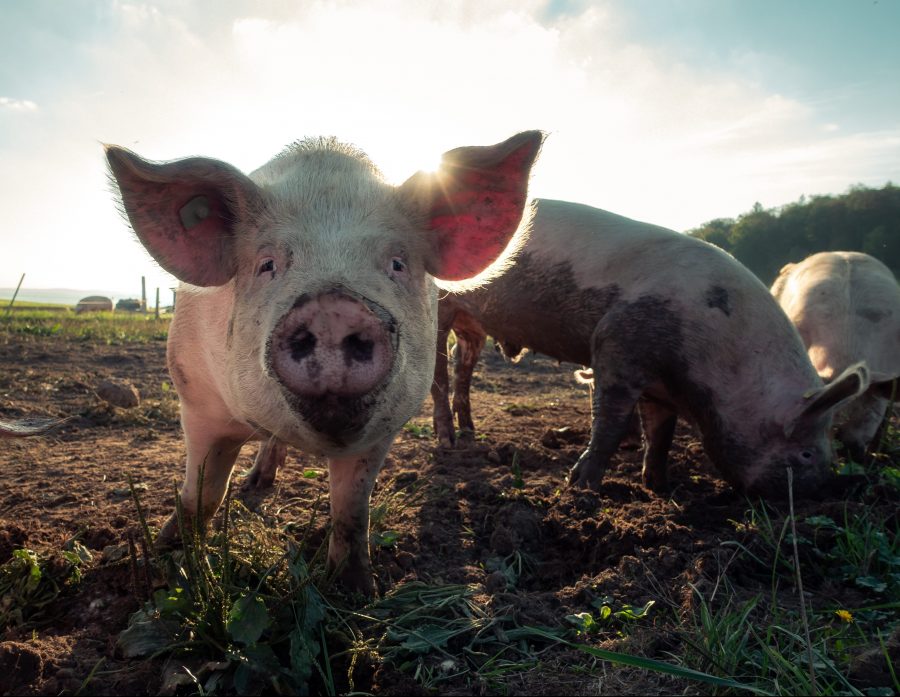Cimenol ring to prevent the invasion of enterocytes by porcine epidemic diarrhoea virus (PEDV)
Introduction
Porcine epidemic diarrhoea virus (PEDV) can cause an acute and highly contagious enteric disease of pigs characterized by severe entero-pathogenic diarrhoea in piglets. Cimenol ring is a natural product effective as a broad-spectrum bactericide and fungicide, which may also be useful to prevent intestinal viral infections such as PED. This compound combined with citric acid has a greater efficacy.
Objective
An in vitro experiment was conducted to determine whether cimenol ring with citric acid capacity were effective to prevent the invasion by PEDV of porcine enterocytes in cell cultures.
Materials and Methods
The assay was performed using IPEC-J2 cells (porcine enterocytes). Vero cells were later used as viral hosts to evaluate the severity of the invasion.
Procedure
- Cimenol ring and citric acid were added to IPEC-J2 cell cultures at different concentrations and cells were pre-incubated for 1 hour.
- PEDV was added and cells were incubated for 4 hours.
- IPEC-J2 cells were lysed and the supernatant was recovered and used to infect Vero cells (250 µl of lysate), which were incubated for 2 hours.
Treatments
(T1) Control: uninfected untreated cells
(T2) Infected untreated cells
(T3) Infected cells with cimenol + citric acid (1:5000)
(T4) Infected cells with cimenol + citric acid (1:2500)
(T5) Infected cells with cimenol + citric acid (1:1000)
(T6) Infected cells with cimenol + citric acid (1:500)
Results interpretation
Evident cytopathic effect (CPE) was observed in the infected Vero cells (presence of damaged monolayers). To quantify the infection, the following were evaluated:
Absorbance at 550 nm (greater absorbance means less cell damage)
Titration of plaque-forming units per well (lower titers mean less CPE)
Results
Monolayer integrity
In the microscopy of Vero cells monolayers (image 1), evident CPE was observed in the infected Vero cells (presence of damaged monolayers) in all treatments but T1. T5 and T6 display greater monolayer integrity. This is indicative of the preventive effect of cimenol ring with citric acid against PEDV invasion at 1:1000 and 1:500 dilutions.

Although there was evidence of a cytotoxic effect in T6 (dilution 1:500), cells remained viable without signs of CPE 3 days after incubation with an untreated medium.
Absorbance
Absorbance results (image 2) show that T5 and T6 absorbances are the only ones that do not significantly differ from T1 (uninfected). This is indicative that cimenol ring with citric acid at 1:1000 and 1:500 significantly prevent cell damage caused by PEDV.

Titration of plaque-forming units per well
PFU per well (image 3) showed that 1:1000 and 1:500 dilutions obtained significantly lower titles in comparison to the infected control (T2), which means they prevented PEDV cytopathic effect.

Conclusions
Absorbance and titration results indicated that treatments with cimenol ring with citric acid at 1:1000 (1 kg/t) significantly reduced the invasion of porcine enterocytes by PEDV in vitro. In addition, 1:500 dilution (2 kg/t) could be used as an intensive shock-treatment in case of a severe PED outbreak.
The cimenol ring is marketed under the name Alquermold Natural by Biovet S.A.

